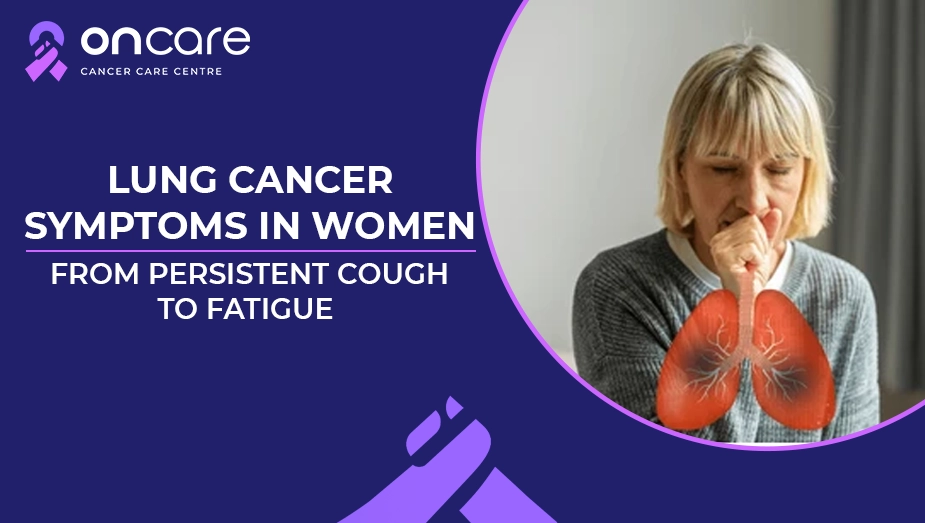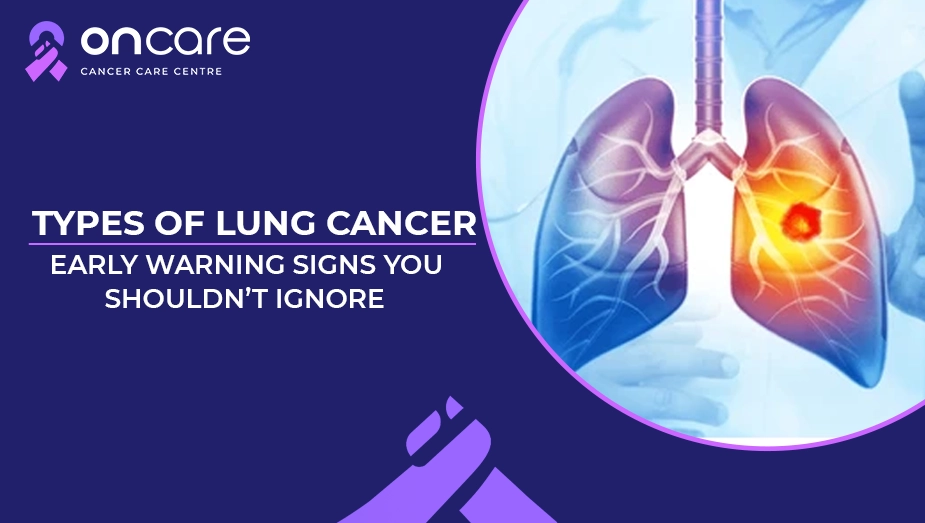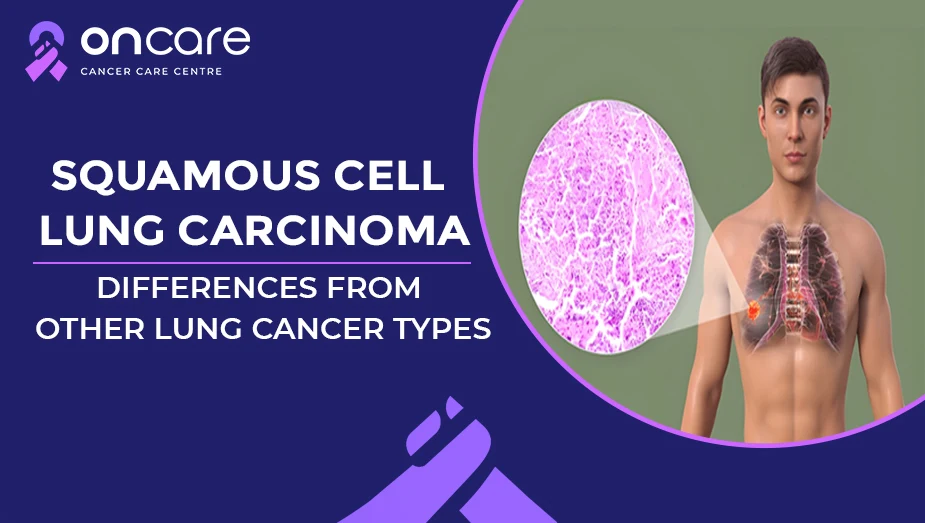Table of Contents
Lung Cancer Symptoms in Women: From Persistent Cough to Fatigue

Lung cancer is one of the world’s largest health concerns across the world. Lung cancer has signs, and it affects women in ways that are mostly ignored. Many people associate lung cancers with long-term smoking habits, but the truth is more complex, because a significant number of women are diagnosed with lung cancers who have not smoked once in their lives. Many studies have suggested that these lung cancers have become one of the leading causes of cancer deaths in women, even surpassing breast cancer in some regions.
In this blog, we’ll discover more about why lung cancer in women goes unnoticed and why the symptoms of these cancers show up differently in women!
Why Lung Cancer in Women Often Go Unnoticed?
Lung cancer symptoms might appear gradually in women, these signs as asthma, allergies, chronic cough, or even stress and aging. Women especially experience symptoms that do not scream any ‘kinds of lung issues,’ which can lead to a delay in diagnosis.
There are several factors that might contribute to late diagnosis in women:
- Different biological responses
Hormonal influences, especially estrogen, might play a huge role in how lung cancer develops in women. There are certain types of tumors that respond differently to certain hormone changes, particularly affecting symptom patterns.
- More nonsmoking causes
Women are more likely to develop lung cancer than men, without smoking. Women with risk factors may include a family history of lung cancer, air pollution, genetic mutation, and industrial radon exposure. These types of women don’t fit the traditional ‘risk factor’ symptoms. These might not immediately raise concern in women.
- Early, mild signs
Women usually develop adenocarcinoma, which is a type of lung cancer that grows outside of the lungs. In these cases, tumors in this region may not interfere with breathing early on, often leading to quiet symptoms.
Lung cancer symptoms in women: Starting from cough to Fatigue
Persistent Cough
If you are experiencing a chronic cough, it is the most common and earliest sign of lung cancer. Meanwhile, a cough can start from something as simple as any type of allergy or a lingering cold. Chronic cough becomes more concerning when it doesn’t improve easily.
There are some signs needs more medical attention, including:
- A chronic cough lasts longer than 3 to 4 weeks.
- Cough can get deeper and more frequent
- These signs can produce blood-tinged mucus.
- These coughs can sound different from the usual cough.
- Shortness of breath
Many women experience chronic cough due to asthma, sinus issues, or some seasonal triggers. Experiencing a constant cough needs medical evaluation, especially when accompanied by other lung cancer symptoms.
Shortness of breath
Experiencing shortness of breath is an early sign of lung cancer, which often goes unnoticed. Women might face aging, stress, or a decrease in fitness, but constant breathlessness can often indicate a risk of lung obstruction or reduced lung capacity in women.
Here’s why it happens:
- A tumor is blocking the airways
- Lung tissue may be inflamed or compressed
- Fluid can build up in the lungs, limiting the movement
If there are certain activities like walking upstairs, exercising, or carrying groceries that you suddenly find difficult, then it could be a sign of needing immediate medical attention.
Chest pain or Discomfort
If you are experiencing chest pain or discomfort, then it should be considered to medically evaluate. Meanwhile experiencing chest pain, which is not sharp, is not always associated with lung cancer.
Many women describes it as:
- Experiencing a dull aches
- Tightness or pressure in the lungs
- A burning sensation
- Experiencing a pain while coughing which gets worsen over time
The pain in my chest always spreads to the shoulder or ribs, especially if the tumor is located near the nerves or the chest wall. When chest pain triggers concerns for heart problems. The respiratory issues start to get overlooked by many women.
Unexplained fatigue
Fatigue is one of the most common and underestimated signs in women with lung cancer. This is not the kind of tiredness that resolves with some rest.
Women might take these cancer-related signs as:
- A deep, constant exhaustion from work
- Experiencing trouble in focusing
- Feeling weak or drained even after taking proper rest
- Lack of energy for daily activities
Fatigue develops when the body uses extra energy to fight or when tumors disrupt the normal metabolic processes. Fatigue is most common in women for many reasons, including hormones, stress or busy schedules, which often goes unnoticed.
Sudden weight loss
If you are experiencing sudden weight loss, especially losing more than 5 to 10 kgs, without even trying. It can be a major sign of something wrong with your body.
Here’s why lung cancer causes weight loss in patients, including:
- Tumors might increase body’s energy needs
- Loss of appetite
- The body usually metabolizes nutrients differently
In most cases, women usually blame these signs as busy life, appetite changes, or stress for weight loss. If you are experiencing these changes rapidly, then it should not be ignored.
Hoarseness
If there is a tumor, chances are it can press on the nerve that controls the vocal cords, which can cause:
- A raspy voice in women, which is unusual
- Hoarseness that lasts more than weeks
- A weak or breathier sound
Hoarseness is often mistaken for a continuous cold or overuse of voice, but when it continues, it's worth consulting and taking some medical evaluation.
Wheezing
These signs often happen when these airways become more narrowed or partially blocked. Wheezing is usually linked to asthma or allergies; these can also be caused by the tumor restricting the airflow.
If you are someone with no history of asthma, then it requires more immediate medical attention.
Recurring respiratory issues
Women with lung cancer problems might experience frequent bronchitis or pneumonia, especially infections that keep returning in the same spot. The recurrence happens when tumors can block the airflow, which often leads to the mucus and bacteria buildup. If you are experiencing constant respiratory problems, you need an immediate medical evaluation.
Blood in the cough
If you are experiencing blood in the mucus or cough, it is a serious symptom. These infections or bronchitis can cause hemoptysis and should be evaluated quickly.
Pain beyond chest
In most cases, lung cancer doesn’t always cause lung pain. Instead, most women might experience symptoms such as:
- Upper back pain
- Shoulder discomfort
- Experiencing rib pain
- Bone aches or tenderness
These types of signs can happen when the cancer starts to irritate nerves or spread to nearby structures. Most women might consider or mistake this pain for muscle strain or posture issues, not realizing its true cause.
Why symptoms may show up differently in Women
Women might experience different patterns of symptoms.
Here's why:
- Hormonal influences
- Higher rates of adenocarcinoma
- Great risk of developing nonsmoking lung cancer
In most cases, women interpret these symptoms differently or have less chance of reporting to medical practitioners, which increases the likelihood of cancer progressing into advanced stages.
When to consult a doctor?
The presence of any symptom can’t determine that you have lung cancer, but if any of these symptoms is persistent and not getting better over time, then you should not ignore it and consult a physician immediately.
Here are few symptoms, you shouldn’t ignore, including:
- Cough lasts more than 2 weeks
- Shortness of breath
- Chest pain that continues
- Fatigue that affects daily activities
- Sudden weight loss
- Recurrent respiratory infections
Note: Early detection offers the best chance of survival and successful treatment outcomes.
Consult Today
The lung cancer symptoms can often appear subtle in women; these signs are easy to overlook or confuse with any less serious health concerns. Some of these signs are chronic cough and sudden weight loss; all of these signs might not appear serious in the early stages. But paying attention to constant changes can make a huge difference. Understanding how lung cancer shows symptoms in women helps to take proactive steps; timely medical evaluation ultimately offers successful treatment outcomes.
At Oncare, we offer premium-quality cancer treatments, including advanced cancer surgeries, at an affordable price range with an experienced cancer specialist consultation.
If you or any loved ones of yours are diagnosed with cancer, then visit Oncare Cancer Center and book an appointment with our cancer specialist today! Get an estimated cost of your cancer treatments today!
Frequently Asked Questions
Ans: Here are the two types of lung cancer, including:
- Non-small cell lung cancer
- Small cell lung cancer
Ans: Here are some of the symptoms of lung cancer, including:
- Cough that doesn’t go away after long time
- Trouble breathing
- Shortness of breath
- Chest pain
- Discomfort
- Wheezing
- Coughing up blood
- Hoarseness
- Loss of appetite
- Unexplained weight loss
Ans: Here are some of the risk factors of lung cancer, including:
- Being exposed to secondhand smoke
- Exposed to harmful substances like radon, asbestos, uranium, diesel, silica, coal
- Previous radiation treatments to the chest
- Having a family history of lung cancer
Book an Appointment
Related Blogs

Types of Lung Cancer: Early Warning Signs You Shouldn’t Ignore
Discover more about lung cancer and its types, early warning signs people shouldn’t ignore, who is at risk of developing this cancer, and when to consult a doctor!

Lung Cancer Supportive Therapy: How It Improves Quality of Life
Discover more about lung cancer supportive therapy and characteristics of supportive therapy for lung cancer, and how these therapies improve the quality of life!

Lung Cancer Treatment in India: Cost, Hospitals, and Availability
Explore lung cancer treatment in India, including cost, top hospitals, and modern therapies like chemotherapy, targeted, and immunotherapy for better recovery.

Lung Cancer Cough: Differences Between Dry and Wet Coughs
Discover more about lung cancer cough and its differences between dry and wet coughs, and why lung cancer causes cough in patients, and when you should get concerned!

Squamous Cell Lung Carcinoma: Differences from Other Lung Cancer Types
Learn what makes squamous cell lung carcinoma different from other lung cancers. Understand symptoms, diagnosis, treatment options, and prognosis in simple terms.

